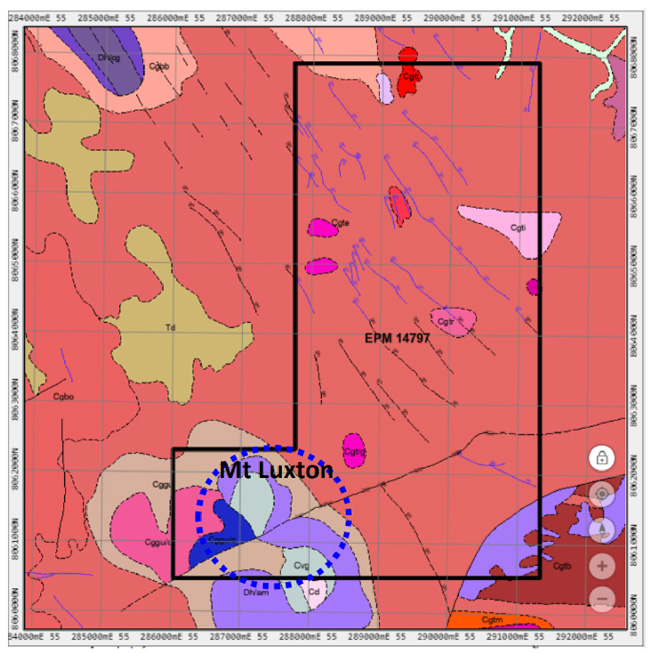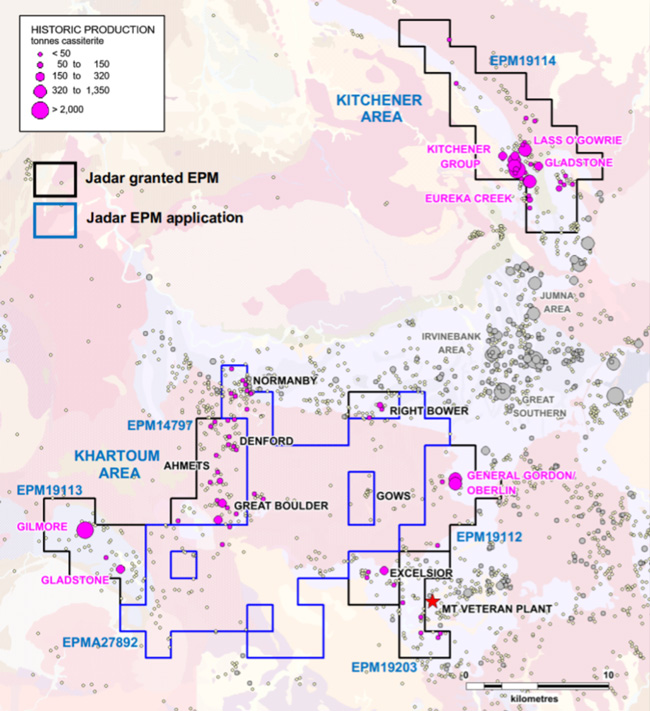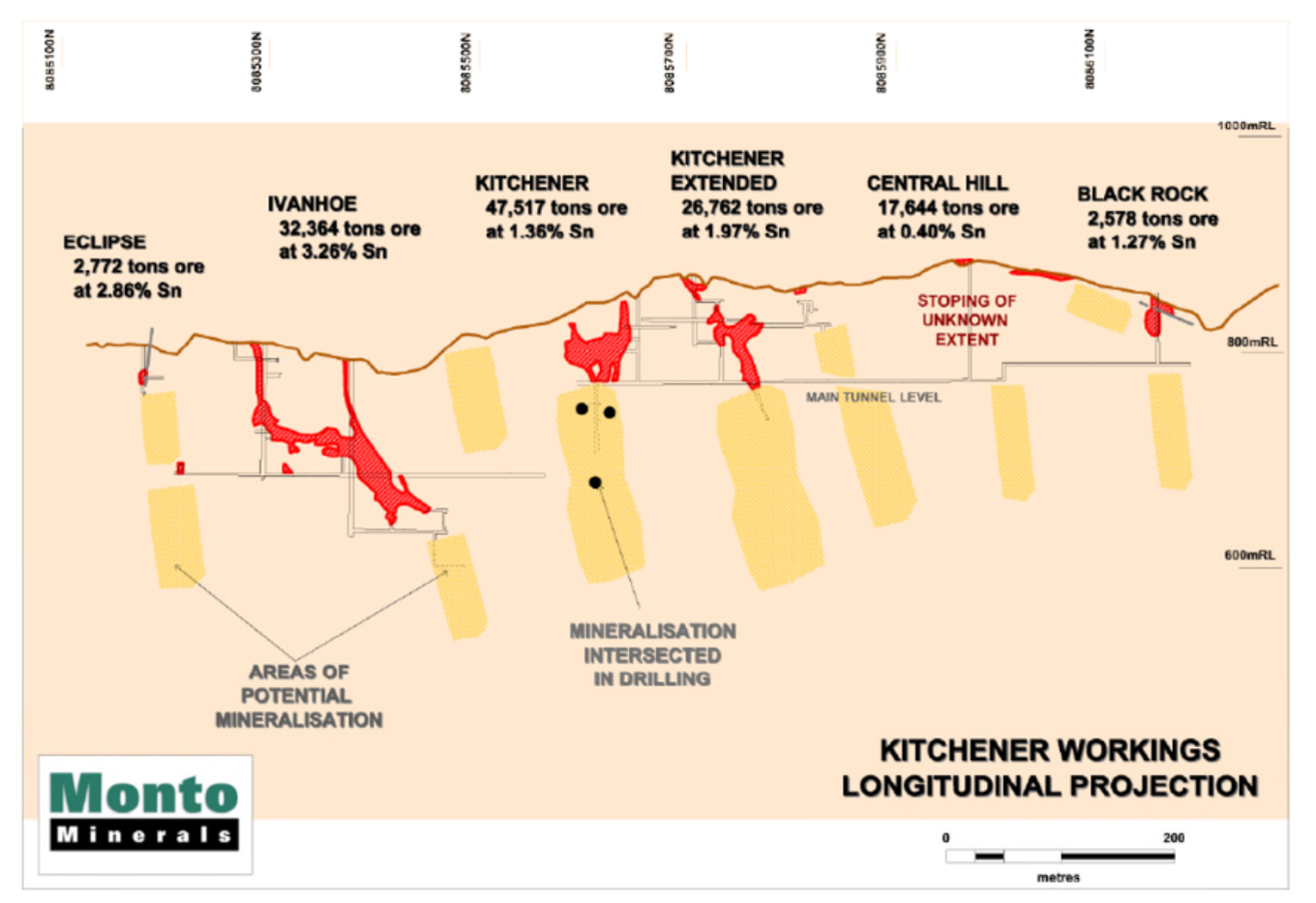
Australia
Khartoum Tin-Silver-Tungsten Project


Mt Luxton Gold-Silver Mine Area
The Mount Luxton gold and silver mine workings are approximately 44km west-south-west of Herberton, 22km north-west of Mount Garnet. Gold was first discovered at Mount Luxton around 1896. The historic mine shaft is situated on a ridge to the east of Mount Luxton, the reef makes little feature on the surface and the entire hill is covered by loose stones, which makes prospecting difficult.
Rock chip’s taken in 2006 from the Mount Luxton area returned results of:
- 3.39g/t Au, 241g/t Ag, 0.11% Cu, 8.25% Pb and 0.1% Sn – Mullock composite
- 0.58g/t Au and 32.2g/t Ag – Working outcrop
- 1.02g/t Au and 5.8g/t Ag – Mullock sample
Kitchener Group of Mines
The Kitchner group of mines is located within EPM19114 and makes up a 1.3km trend of historic mines with recorded production of over 1,959t of tine metal at grades up to 3.26% tin. The bulk of production from the Kitchener area has come from a single line of lode, extending from the Eclipse mine at the south to the You and Me mine in the north, a distance of 1.3km.
The potential for shallow, high grade mineralisation is indicated by shallow drill results. (Maximum drill depth 60m) from drilling in 1985 by Great Northern Mining Corporation at the You and Me mine including:
- 15m at 0.52% Sn from 18m and 12m at 1.0% Sn from 44m – Hole WYM01
- 22m at 0.65% from 10m – Hole WYM05
- 11m at 0.62% Sn from 19m – Hole WYM06

Geology
Khartoum has been identified as particularly prospective for tin, silver, and tungsten mineralisation hosted by a Late Carboniferous-Early Permian felsic intrusive, mostly associated with cassiterite bearing quartz veins in greisen and disseminated cassiterite in greisen.
The Herberton region contains a suit of rocks ranging from Paleoproterzoic gneiss to Tertiary cover. The rocks of primary interest are the numerous highly fractured I-type mid-late Carboniferous granitoids of the O’Briens Creek Supersuite and late Carboniferous Boonmoo Volcanic Subgroup felsic volcanics which dominate the tenement package and have intruded, or overlie, the extensive Devonian Hodgkinson Formation, a series of interbedded sedimentary units consisting primarily of arenite and mudstone with lesser chert, conglomerate, basalt and limestone.
The Herberton area is a major tin-tungsten bearing district and contains numerous historic workings for tin, tungsten, copper, zinc, molybdenum, antimony, lead, silver and gold. In granite-related tin deposits the metals are commonly focused along the apical portions of the granite and metal bearing fluids may breach into the wall rocks resulting in vein systems and breccias with significant alteration footprints.
